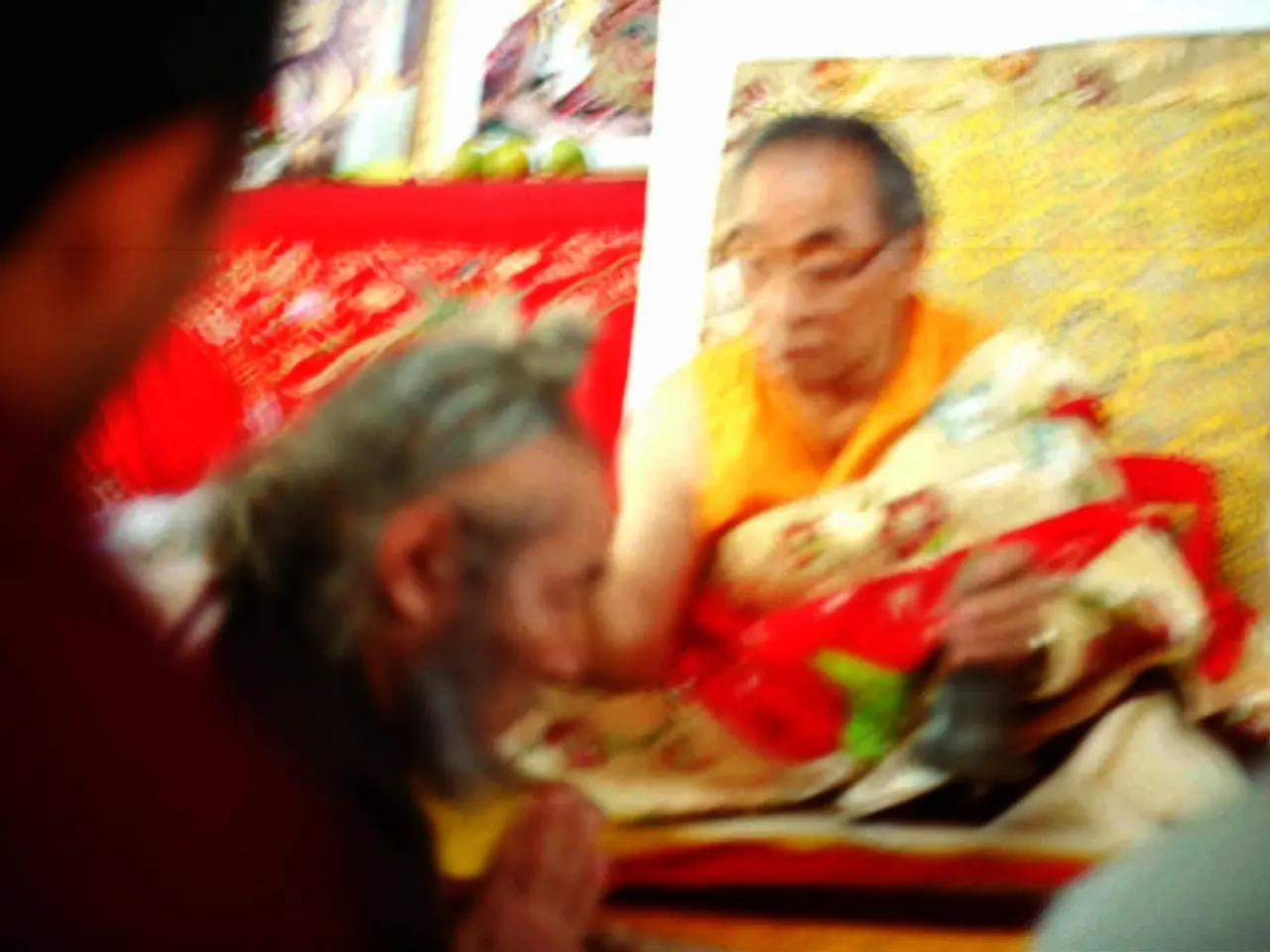Is kambo effective? Exploring its ceremonial usage, safety considerations, and potential hazards.
The kambo ritual, a centuries-old practice derived from the secretion of the Phyllomedusa bicolor, or Giant Monkey Tree Frog, has been used by indigenous Amazonian tribes for purification, strength, and energetic clearing [1][2]. This ancient tradition is gaining attention in urban populations, but its benefits and risks remain a subject of debate.
## Benefits: Scientific Evidence
Kambo contains several bioactive peptides, including phyllocaerulein, sauvagine, dermorphin, deltorphin, and adenoregulin. These compounds are known to interact with the body in various ways, affecting blood pressure, digestion, adrenal function, pain relief, and immune health [1][3].
Laboratory research and preliminary studies suggest that these peptides may have anti-inflammatory, analgesic (pain-relieving), and immunomodulatory effects. There is also anecdotal and some preclinical evidence that kambo may help with detoxification, chronic inflammation, and nervous system modulation [3][4]. However, it's important to note that controlled clinical trials are lacking.
Many users and practitioners report increased energy, mental clarity, and a sense of purification or emotional reset after a session. These effects are often attributed to the ritualistic context and the strong biochemical response, though scientific evidence to support these claims is limited.
## Risks: Scientific Evidence
The ritual typically involves applying kambo to small burns on the skin, which can lead to pain, swelling, itching, and nausea. The most common immediate side effect is a strong purgative reaction, including vomiting and increased heart rate [1][3].
Although rare, there have been documented cases of severe adverse reactions, including severe electrolyte imbalance, acute pancreatitis, kidney injury, and even death in individuals with pre-existing health conditions or when the ritual is improperly administered [4][3].
There are no large-scale, peer-reviewed clinical trials establishing the safety profile of kambo for the general population. Most safety concerns are derived from case reports and toxicology studies [4][3].
## A Look at the Evidence
| Aspect | Evidence of Benefit | Evidence of Risk | |-----------------------|------------------------------------|-----------------------------------| | Analgesic/Anti-inflammatory | Preclinical, peptide studies [3][1] | Not well quantified | | Detoxification | Anecdotal, traditional use [1][2] | Safety not established | | Emotional/Spiritual | Anecdotal, user reports [1][2] | Risk of psychological distress | | Safety | — | Case reports of severe reactions [4][3] |
## Conclusion
While kambo's bioactive peptides show promising pharmacological activities in vitro and in animal models, robust clinical evidence for efficacy or safety in humans is lacking. The risks include both common unpleasant side effects and rare but serious adverse events. Controlled research is needed to clarify the therapeutic potential and safety of kambo use.
It's crucial for those considering a kambo cleanse to speak with their doctor first. Kambo is a poison and can cause vomiting, sweating, rapid heart rate, and in some cases, death. Applying it topically can also cause death due to skin absorption of toxins.
Researchers do not yet understand the full effects of kambo on the human body, and its potential benefits may be a result of the placebo effect. Proponents believe that kambo can purify the physical body of toxic substances, purify the mind and spirit of negative energy, bring luck, increase stamina, cure physical ailments, and potentially treat conditions such as Alzheimer's disease, Parkinson's disease, cancer, infertility, chronic pain, depression, anxiety, migraines, infections, addiction, but there is no scientific evidence to support these claims.
The ritual involves a shaman healer burning a person's shoulder, leg, or foot and applying kambo secretion to the wound. The giant monkey frog, native to the Amazon rainforest, is found in parts of Brazil, Peru, and Venezuela. Giant monkey frogs are nocturnal and are located by their distinct call, making it difficult to collect kambo.
Kambo is a traditional healing ritual performed in many South American countries. The collected kambo is left to dry on wooden sticks, and a shaman may encourage rehydration by drinking water during the ritual.
- The kambo ritual, derived from the Giant Monkey Tree Frog's secretion, may interact with the body, affecting blood pressure, digestion, adrenal function, pain relief, and immune health.
- Preclinical studies suggest that kambo's bioactive peptides may have anti-inflammatory, analgesic, and immunomodulatory effects, although controlled clinical trials are absent.
- Some users and practitioners report increased energy, mental clarity, and a sense of purification after a session, but scientific evidence to support these claims is limited.
- The ritual can lead to pain, swelling, itching, and nausea, with a common side effect being a strong purgative reaction including vomiting and increased heart rate.
- Severe adverse reactions have been documented, including electrolyte imbalance, acute pancreatitis, kidney injury, and even death, particularly in individuals with pre-existing health conditions or improper administration.
- Current evidence does not support claims that kambo can treat conditions such as diabetes, depression, psoriasis, atopic dermatitis, Crohn's disease, obesity, or mental health issues.
- Research in the field of health-and-wellness, mental-health, science, and AQ (aquatic ecosystems) is needed to clarify the therapeutic potential and safety of kambo use.




